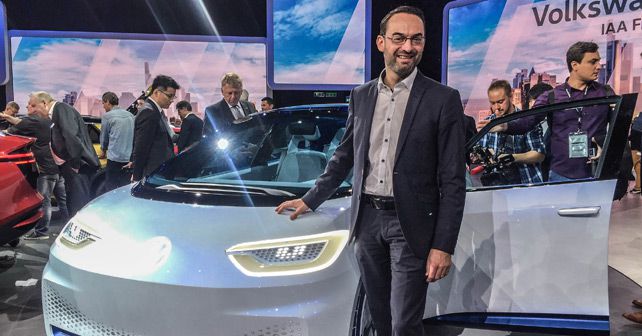
A number of companies have set 2020 as their target to be in a stronger position as far as e-mobility is concerned – why 2020, and not sooner or later?
In 2020, a few things will happen in parallel. We have a strong change in regulations. In Europe, there will be tighter CO2 regulations, and this can only be met by a large number of pure electric cars. We see that China is creating rules that go directly towards electric cars, and, more or less, only electric cars. And even the US is on the way towards electric mobility. And we also see huge progress in the cost of batteries and electric powertrains. We will have the energy density available to allow a range of 400-600 kilometres in a typical car at a cost that is affordable for our customers. At present, the customer feedback on our e-Golf is that the price is too high and the range is too low. But, in 2020, things begin to come together and I’m sure that the e-Golf will have a 600-kilometre range and be the same price as a diesel golf – so it becomes very attractive.
This development on battery technology – is it being done at the supplier side or jointly between you and your suppliers?
It’s definitely a joint activity. 70% of the cost is in the cells, while 30% is in the system integration – so its definitely give-and-take. Looking at the electric cars of today, the batteries are very complex. So we’re doing a lot of work to reduce that complexity and also developing super reduced batteries for better quality and better cost.
Is the next step solid-state batteries?
Lithium ion is the base technology, whereas solid-state is getting rid of the fluid in the battery. By doing this, we’re creating more density – and this is the magic. So, even in the lithium ion base technology there is progress – we’re achieving between 5-6% better energy density every year, and with solid-state we assume that there’s even more energy density to be had, somewhere in between 10-30%.
What’s the environmental impact of producing an EV versus a conventional car – also from the point of view of recycling?
Electric cars have less parts and lower complexity, so production is leaner and it consumes less energy. The batteries have an energy chain, and we’re taking care to ensure that the supplier base meets our requirements. Our vision for the batteries is that it should last nine years in the car and then be used in a second life scenario like a power-wall or for grid stabilisation. There are many applications in front of us for second use batteries. We assume that a battery has a life of 20 years plus, and then we’ll look at recycling.
What’s holding the customer back in adopting EVs today?
The main complaints are that the range is not enough, the price is too high and the charging infrastructure is not available – these are the three main sticking points. But, if you look at it, the first e-Golf had a range of 190-kilometres, the next one is 300, and we’re talking about between 400 and 600. Plus, we will start at prices that are equivalent to the diesel car today. We’ve done a lot of work on studying the purchasing power of people for cars, and we’re now hitting exactly the same price point. So, our belief is that we’ve solved the range issue and we’ve solved the price issue – and we’re combining all this with very attractive super-modern cars.























Write your Comment